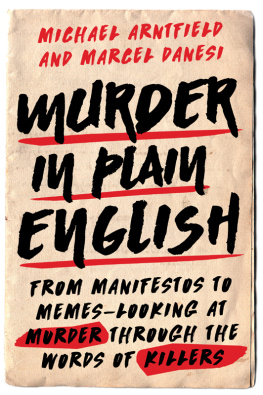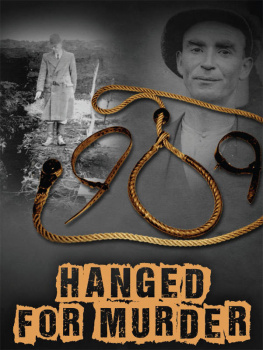All rights reserved.
Duplication of the contents of this book in whole or in part without written permission of the publisher is prohibited.
1989, 1990, 1991 by Media Queen Ltd. Inc.
1995 by Sondra London
Media Queen Ltd. Inc. previously published two volumes entitled
Killer Fiction and Beyond Killer Fiction.
Upon dissolution of Media Queen Ltd. Inc., all copyrights held thereby were conveyed to Sondra London and incorporated in this volume along with previously unpublished material.
An earlier version of The Serial Killer Who Loved Me was published in Knockin on Joe: Voices from Death Row
Nemesis Books (London, England, 1993), along with My Ticket to the Society of Fiends, Death House Screams,
Early Release, and Nigger Jack.
Nigger Jack was published in Loompanics Unlimited Main Catalog 1992
and Loompanics Golden Records 1993.
Early Release was published in Loompanics Golden Records 1993 .
Spring Break was published in Brutarian, Vol. 1 #2.
Expecting Dinner was published in Boiled Angel #7.
H ALITOSIS O F T HE S OUL
by Colin Wilson
G erard John Schaefer was undoubtedly one of the nastiest serial killers of the twentieth century.
I am not speaking simply about his crimeswhich were certainly bad enoughbut about his mind. George Orwell said of Henry Miller that there must be millions of men who think and speak of sex just as crudely, but that the surprising thing is to see it written down. That comment could readily be applied Schaefer.
American prisons must be full of men whose view of sex is as brutal and sadistic as Schaefers; the astonishing thing is to see it presented in the form of literature.
Schaefer did his best to perpetuate that view. His stories, he said, were supposed to be shocking; their purpose was to make people see what real violence was all about. Many readers, I suspect, will fail to understand what purpose is served by printing them. Although I see their point, perhaps I can provide a meaningful rationale.
When I first read an account of Schaefers crimes in True Detective magazine in 1974, and learned that the evidence that convicted him consisted of a G number of sadistic stories that were found in the back of a closet, I felt considerable curiosity about the stories. Then finally in 1991, when I saw Killer Fiction advertised in the catalogue of New Jersey bookseller, I ordered it immediately.
I found that this collection of Schaefers stories, edited by Sondra London, certainly provided an interesting insight into the mind of this most sadistic serial killer. Schaefer fantasizes repetitively about the same thing: picking up a whore, taking her to some remote location, then stabbing or hanging her and defiling her lifeless corpse. So in fact, these early writings cannot be treated as literature, even of the most primitive orderthey are too repetitive. The only possible reason to study them is for the insight they afford into the disordered mind of the sexual psychopath.
Technically speaking, based solely on his convictions, Schaefer could not be labeled a serial killer. He was sentenced to life imprisonment in 1973 for the murder of two girls, Georgia Jessup and Susan Place, whom he killed while he was out on a $15,000 bail for kidnapping and threatening two other young girls.
Fortunately, the mother of Susan Place had noted down the license number of Susans date on the evening she disappeared. That license number, beginning with a 4, led the police to the obviously innocent owner of a car in Pinellas County, Florida.
Six months after her daughters disappearance, Lucille Place happened to be driving through Martin County when she noticed that all the car license plates began with 42. She now re-checked the number she had noted down, substituting 42 for 4, and learned that this license belonged to Gerard John Schaefer. Learning that Schaefer was now in jail for the abduction and assault of two girls, Mrs. Place went to look at Schaefers picture, and recognized him as the man who had driven off with her daughter and Georgia Jessup. Georgias purse was found in Schaefers room, as were three cartons of papers containing the killer fiction that jurors cited in sending him to prison for two life terms. The police were fairly certain by then that Schaefer was responsible for at least twenty other dead or missing girls, and recent detective work has brought to light some tantalizing connections between the writings Schaefer bills as fiction and some very real victims.
Sondra London describes how, when she was 17, she met a handsome 18-year-old student then known as John Schaefer, who became her first lover. Bright, attractive and personable, she reports that he made quite a presentable escort for the greater part of a year. But in due course, his darker side emerged as he admitted that at times he was overwhelmed by the violent compulsions of his inner demons. In fact, by his own admission (in False Confessions) he had killed at least seven women before he ever had normal sex with a girlwho may well have been Sondra London.

One of the essays he wrote about the time he was dating Sondra concludes: It is trying to fight the urge to relieve these terrible cravings. I am sure that there must be an answer somewhere, and some day I will be cured. Schaefer was tormented by his obsession with sexualized violence, and seems somewhat wistful as he tries to wish it all away.
Sondra states that she broke off her affair with the budding serial killer not because he harmed, abused or threatened her, but because she did not want to serve as his psychiatrist or mother confessor. They parted company after a year, and then nine years later, she learned that he had been convicted of murder. Finally, in 1989, twenty-five years after first meeting him, she wrote to her ex-lover in prison, inviting him to collaborate on a book about his life and crimes.
Most prisoners are glad to enter into a correspondence. Prison is a dreary and demoralizing place, and since human beings can only achieve personal evolution through self-expression, one of the most damaging things about imprisonment is that the convicts mind is condemned to stagnation. And so it was that after being isolated from intelligent companionship for the greater part of his adult life, Schaefer poured considerable energy into his correspondence with the woman who had once been his closest companion.
Although Schaefers writing technique showed considerable improvement after being honed by college-level creative writing courses under the Southern Gothic novelist Harry Crews, his psyche remained fixated at the same coprophilic level revealed in the early writings seized by police in 1972.
In the spring of 1989, Schaefer began sending London not just repetitive, sadistic fantasies, but also some extremely interesting narratives that appear to be far more factual, with titles like Flies in Her Eyes and False Confessions. It is typical of Schaefer that he modified confessions with false, so that if challenged, he could claim that it was just a fantasy; he always tried to have it both ways.















